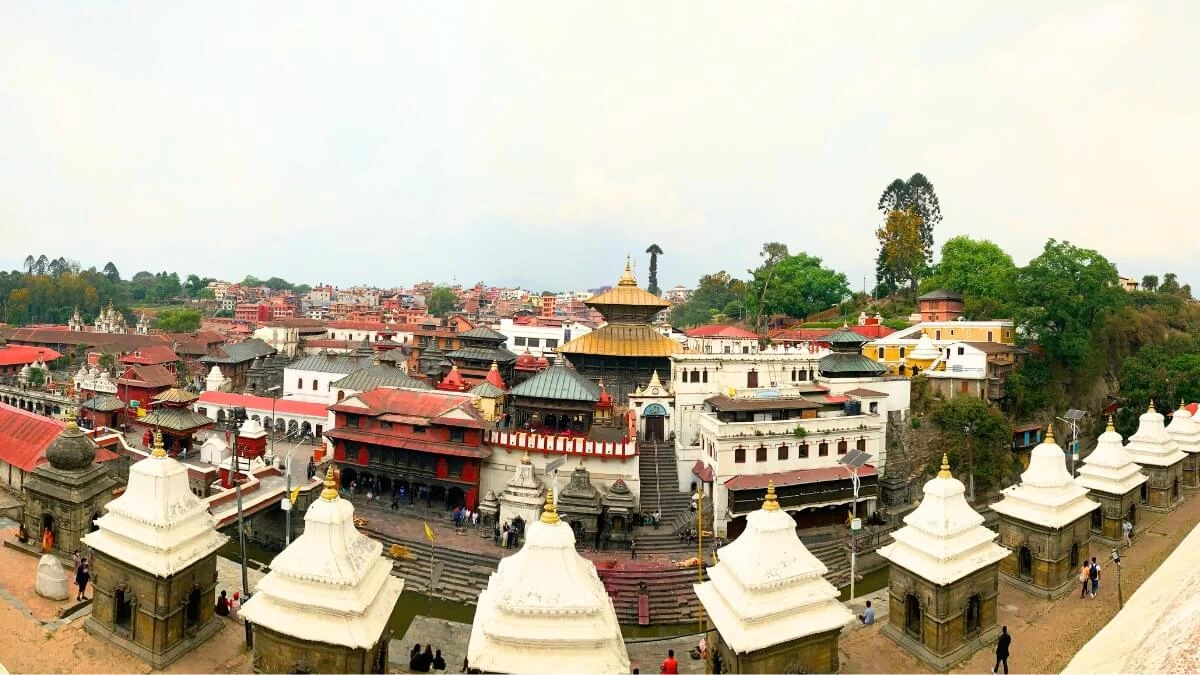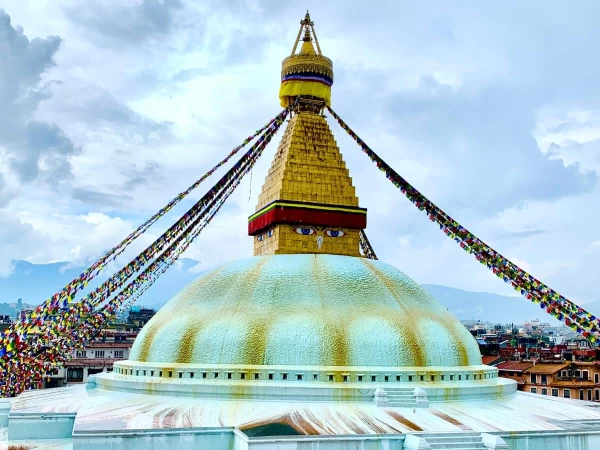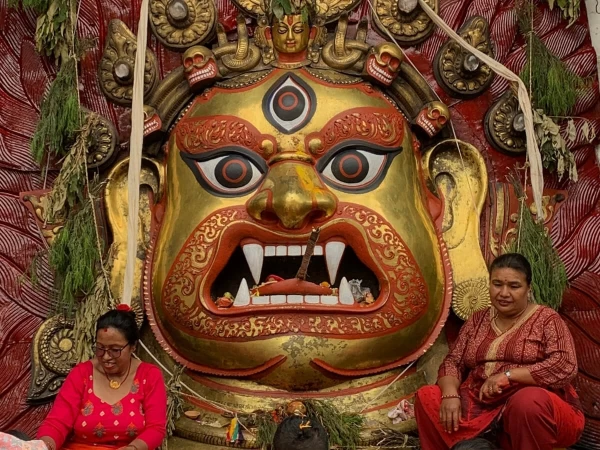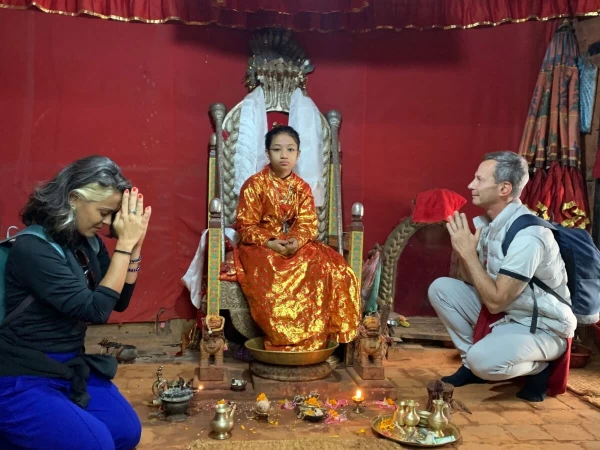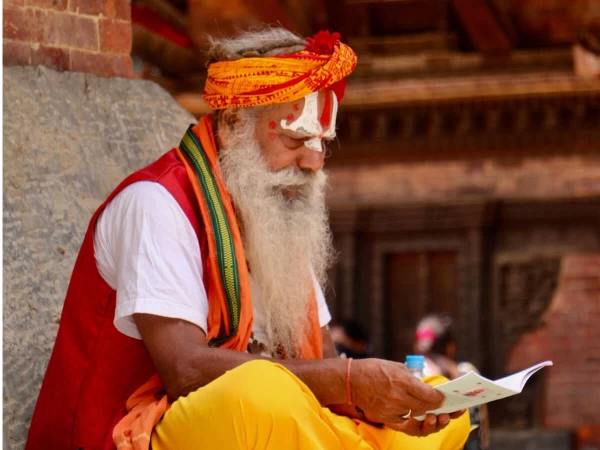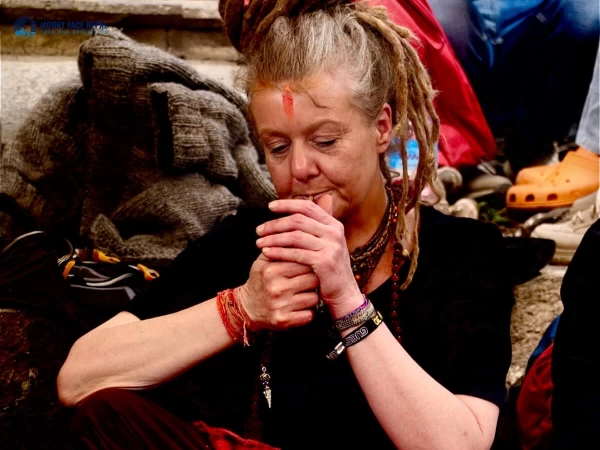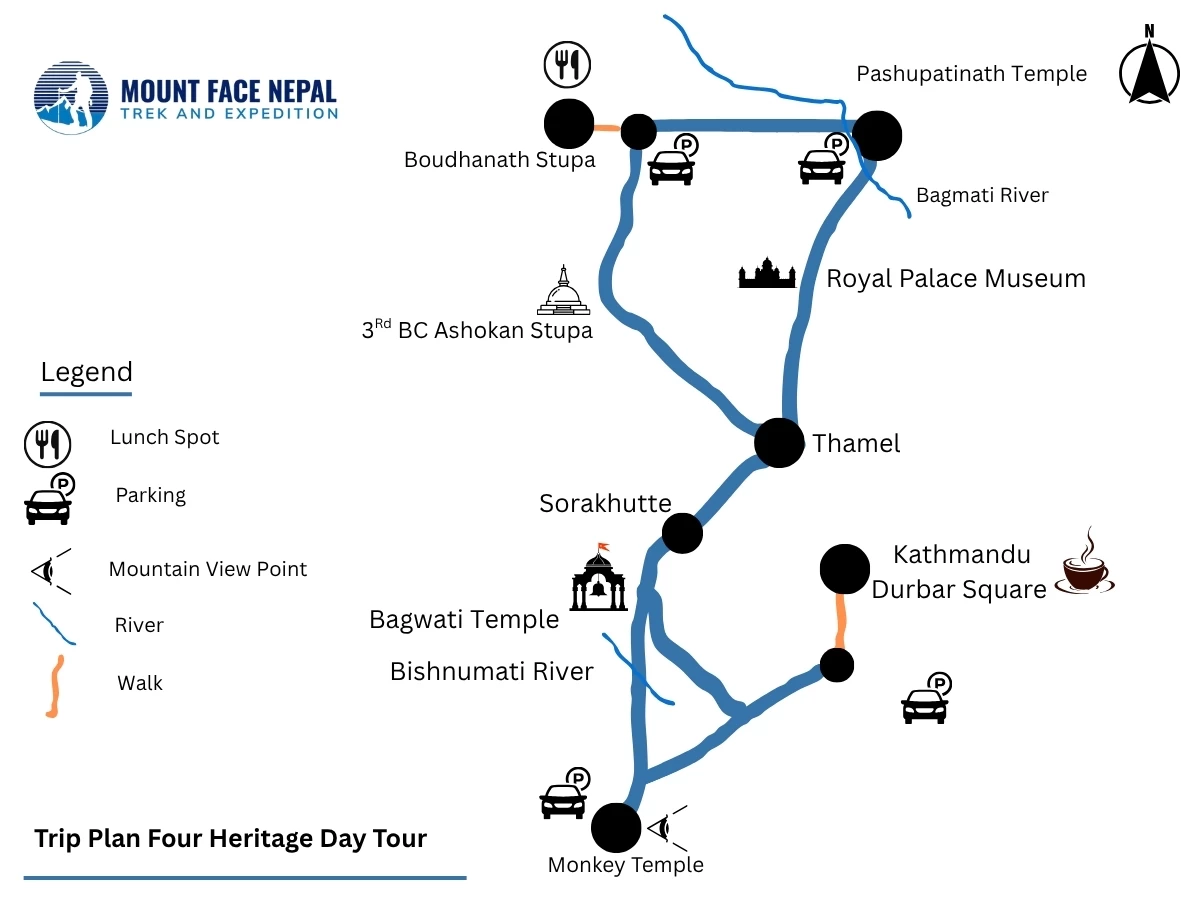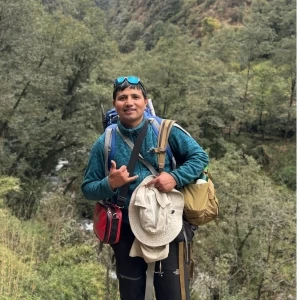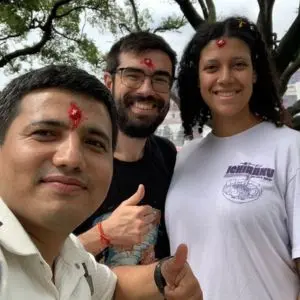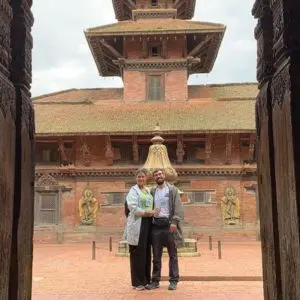If you are here in Nepal and not visiting a historical site with rich in culture and architecture is like you cooked rice pudding and not have taste of it. To full fill all your expectation Mount Face Nepal design an extensive UNESCO Heritage Day tour that offers a beautiful experience with in the Newari Civilization based in Kathmandu Valley. This four UNESCO heritage sites includes Swayambhunath Mahachaitya, Kathmandu Palace Square, Boudhanath Stupa and Pashupatinath Temple based in Kathmandu District. Each of this monument have own style of architecture and religious importances. Out of four heritage sites, two are related with Buddhist religion where two are connected with history and Hindu Religion respectively. All sites hold magical collection of temples and architectures ranging from ancient artifact to contemporary masterpieces with profound meaning. This four Heritage comprehensive day tour is about 6-7 hours guided tour including lunch break that start from your hotel and end in the same spot. While touring, you will have chance to learn about Thanka Painting, Hindu Cremation and Sound Healing method as well. For sure, at the end of the day, you will be possessed with intricated information about Newar and their customs and traditions.
Four Heritage Day Tour
- Duration 1 Days
- Trip Grade Easy
The easy grade is if you do not find any difficulties to trip. The trip reaches up to 3000 meters in altitude. The trails will not be rugged, and these types of trips are highly suitable for family trips. The trips are generally around one week.
- Country Nepal
- Maximum Altitude 1400m
- Group Size 20
- Starts Hotel
- Ends Hotel
- Activities Tour
- Best Time All time of the Year
Four Heritage Day Tour Itinerary
- 08:30AM: Pick up from Your Hotel
- 09:00AM: Reached Swayambhunath Mahachaitya
- 10:30AM: Leave to Kathmandu Palace Square
- 11:00AM: Reach Kathmandu Palace Square
- 11:30AM: Get Bless from Kumari
- 12:30PM: Leave to Boudhanath Stupa
- 01:15PM: Reached Boudanath Stupa
- 02:00PM: Lunch
- 02:45PM: Back to the site
- 03:30PM: Leave to Pasupatinath Temple
- 03:45PM: Reached Pasupatinath Temple
- 04:45PM: Leave to Thamel
- 05:30PM: Reached at Hotel
Mount Face Nepal Experts offers personalized trekking and tours in the Himalayas. Experience unique, safe, and expertly planned adventures tailored perfectly to your style and preferences.
Four Heritage Day Tour Cost Details
Includes
- Bottle of Drinking Water
- Private Transportation According to Group Size for a Maximum 8 Hours
- A Professional Tour Guide
- Insurance for Tour Guide
Excludes
- Lunch
- Medical Expeneses
- Insurance
- Tipping
Dates and Availability
"The schedule for the Four Heritage Day Tour is thoughtfully planned; however, weather, traffic, or unexpected events may require adjustments. Our experienced guide will make necessary changes along the way to ensure you have the best possible experience. Additionally, the schedule is flexible—you're welcome to customize it to suit your interests. We encourage you to speak with us before your tour so we can tailor the journey to match your expectations."
Essential Information
List of heritage site visiting in the heritage day tour package
Four UNESCO Heritage Day tour include Swayambhunath Maha chaitya, Kathmandu Place Square, Pashupatinath and Boudhanath Stupa. All of them are like an open museum that deliver excellent sample of Nepali art and craftmanship from ancient to medieval era of Nepalese History based on Hindu and Buddhist practices.
Swayambhunath Mahachaitya in Heritage Day Tour
Swayambhunath stupa is one of the beautiful touristic and pilgrimages destination in Kathmandu valley that hold many ancient shrine and history behind. The word Swayambhu is literally combination of two sub word Swayam and Bhu means self and created respectively. If we go into ancient myth of this valley’s creation, this holy site is connected with origin of this valley. According to a holy books called Swaymbhupurana ; this whole valley was a big and beautiful lake surrounded by greens hills that protected by Himalaya. Once upon a time one of the Boudhisatva, Manju Shree was travelling towards southern part of this landscape and suddenly amazed with the aura of this place. Manju Shree stopped and taste the beauty of the nature. On the same time; he notices a million of lotus flower was floating on the big lake. Out of millions of lotus flower, he glimpsed with an extraordinary five different colored flame towards sky that eliminating from a lotus flower. Later, he decided to fly near to the lotus flower and did as he thought than he realized the spirituality and different energy than other places. He worshiped and got bless from that specific lotus flower. He thought that he could fly with his magical power and able to get the blessing but human later in the era, cannot fly. If human can not fly means they will not able to get bless from this specific place and he decided to cut the hill in southern part of the landscape called Chovar. All water drained outside however million of lotus flower went closer to protect that specific lotus flower and became like a hill which is known as a Swaymbhunath stupa (self-created lotus hill). Because off the hill created with millions of lotus flower, this hill is also known as lotus hill. In Tibetan community it is more famous as Phags.pa Shing.kun means Sublime tress where hundreds type of plant can be found around. In addition of the plant, you can also find hundreds type of bird in the Swaymbhu arena. As we can find different variety of birds and plants, it is also importance for nature lover. Since Swayambhunath Mahachaitya is the home of thousands monkey, it is famous as monkey temple in this modern era. Definitely; monkey is holy animal that has connection with Bodhisatva, Manjushree.
Historically, this temple was built by great grandfather of Lichhivi king Mandev in early 5th century however it is also believed that a great emperor Ashok from Indian sub-continent was visited this place in 3rd BC and built temple. The temple which was built by great emperor Ashokan was later destroyed. Many times, in the history, this stupa was re-built and renovated after destruction from different region. Most note able destruction was happened in 14th CAD by Muslim Attacked. The stupa was renovated effectively in 2010 AD by Tibetan Nyingma meditation center of California after 15th renovation in 1921AD.
To reach in main shrine area, there is two staircases. One staircase is longer with 424 stone steps that connect lap of the hill to top of the hill near Dharmadhatu Mandala. Another staircase is shorter with 124 stone steps that connect chaitya park. During Swayambhunath Mahachaitya tour you will see many beautiful shrines and deity figure including a big Chaitya.
The main shrines; Swayambhunath mahachaitya have different section that has individual significance and representation which is explain as below.
Dome: - a semi spherical solid structure is known as dome that represent the world. According to Buddhist philosophy; people are sleeping means they don’t know the exact meaning of life. They just running for power, money and desire so they are forgetting the exact way of happiness. Buddhist philosophy said that if they wake up and see upward; they will see the path of ultimate happiness so called enlightenment.
Nose: - That looks like a number one in Nepali Script that represent the method of enlightenment
Eyes: - Two eyes printed in each direction and eight eyes represent the eight noble truth. The eight noble truth is the solution of suffering and it will help to go enlightenment zone.
13 steps: - The thirteen steps represent the thirteen stages that takes us in to the enlighten zone.
Lotos flower: - The lotus flower represents the purity and compassion.
Umbrella: - An umbrella that represent the protector of three jewels in Buddhism; Budha, Dharma and Sangha
Pinnacle: - The pinnacle represents the highest form or ultimate happiness zone or enlightened zone.
Bajra is also known as thunderbolt and Dorje which is symbol of emptiness and ultimate power that placed in eastern side of stupa. This Bajra has great significance in Bajrayana Buddhism. Bajra and bell symbolized the male and female power respectively in Bajrayana tradition. During religious ceremony; Bajra hold in right hand where as bell in left hand. It is believed that Bajra will protect the shrine.
Prayer wheel is the wheel contained thousands of mantras, Om Mane Padme Hum. The mantra, Om Mane Padme Hum printed in paper than put inside that spinning wheel and people spin the wheel when they are in stupa. It is believed that spinning the prayer wheel means purifying the soul, purifying the soul means removing all negative energy from body and mind. Removing the negative energy means welcoming all positives vibes around you that make your life beautiful and energetic with full of positive attitude.
Prayer Flag is the beautiful flag called lung ta in Tibetan language. This has long history behind it. The prayer flag has five different colors representing five cosmic elements. Basically, in prayer flag they have printed the mantras called Om Mane Padme Hum. This prayer flag hang either in the monument or tops the high passes. It is said that when they hang prayer flag on top of the hill, wind will blow the mantra around the world soon and it help to established the peace and prosperity around the world as soon as possible. During this tour, you will encounter beautifully hanged prayer flag all around Swayambhunath mahachaitya and its surrounding.
Combined shrine of Budhhist and Hindus is set up near to Harati temple that hold great importance to maintain religious harmony. The most interesting shrine is combination of Shiva Lingam and Five meditational Budha.
Harati temple: This is the temple of small chicken fox and protector god of Swayambhunath Mahachaitya. About this temple the 4th Khamtrul Rinpoche, Tenzin Chokyi Nyima wrote about this temple in the 18th century: I have noticed that Tibetans consider Hariti as of minor importance because she is a Yakshini. While they do visit the shrine, they do so only while disparaging her and without presenting her due homage or offerings. This is really a foolish way to act, and is the behavior of people who have heard only few teachings. He further explained, Generally speaking, it is indeed true that she is not an object of refuge equal in importance to the sacred representations of buddhas bodhisattvas,lamas,yidams and so on . Yet, neither is she in any way similar to the minor spirits, such as the local deities of the region, or of a particular place. Among the powerful god’s intent on positive activity after they had come into the presence of the Buddha and seen his face and who are worthy of homage, some gained major importance, even though in the Dharma scriptures such as Vinaya they are not specifically referred to or associated with technical terms such as Dharmapala and Guardian deities; whereas in actual meaning they do function as guardian deities. It is for this reason that the Buddha himself has said, ‘Those who vow to take me as their teacher should offer a first piece of each meal to the Yakshini Hariti. Hence, we should understand the matter as follows. Having met the Budhha face to face, she became a guardian of his teaching and as such became as worthy of homage as the sacred Dharma itself. Thus, it is that while recollecting her excellent qualities, with great respect and with a pure mind, we should offer her homage.”
Dharmadhatu Mandala located in eastern stairs of Swaymbhunath Mahachaitya is an impressive copper gilt Bajra that supposed as the form of the Mandala of Manjushri. King Pratap Malla placed this Mandala along with two towers and long staircase in the 17th century.
Chaitya Park: Once you step up from North East Side of Swayambhu Mahachaitya you will encounter dozens of the small chaitya built by respective family in memory of great monk or their ancestor known as Chaitya Park. Historian and archaeologist believe that some are 2/3 hundreds year old or some are very ancient from 7th CAD’s chaitya.
Basubandu Park: Basubandhu Park is located southern side of the Swayambhunath Mahachaitya. This park was set up for memory of Acharya Basubhandu who was visited Nepal and passed away. The relics of Acharya Basubandhu was placed in the stupa itself. This park holds many beautiful shrines including Monkey Swimming Pool, Statue of Manjushree, Big Bell, Souvenir Shop and Restroom.
Shantipur : Shantipur is the oldest collection in north east of Swayambhu Mahachaitya that known as Akashpur in the past. It is believed that Shantikar Acharya still mediating inside this building with his magical Tantric Power.
Kathmandu Palace Square during Heritage Day Tour
Another interesting monument visiting during this day tour is Kathmandu Palace Square located in center of Kathmandu and near to touristic spot, Thamel. The name Kathmandu literally came from temple Kasthamandap, one of the ancient buildings, made from single huge tree in the whole square. The arena itself was known as Basantapur and Hanuman Dhoka in the past from where Malla and Shaha King Rule for many hundreds year. The Kathmandu Palace square remained as magical open museum that adorned dozens of temples and building precisely carved facades the Newar Architecture after Shaha king moved to Narayanhiti Palace. It is an important spot for Hindu and Buddhist community where most of the collection in this complex is from 16,17 and 18th CAD however Kasthmandap was built in 7th CAD. Because of its ancient collection, Kathmandu Palace Square was listed in UNESCO heritage site in 1979 AD.
The most notable Attraction of the Kathmandu Palace Square
Kashtamandap Temple: a great example of wooden building that built in 7th CAD. It was built by use of wood from a single big tree. Literally Kasthamandap is the combination of two word; Kastha(wood)and Mandap (ceremony hall)
Kumari Ghar: Kumari Ghar is another beautiful showcase of Newari Architecture that hold a Kumari Devi. Kumari is a small girl worshiped as human manifestation of Tulaja Devi also known as living goddess. Worshiping a shakti has great history however the Kumari tradition in Kathmandu Palace square was started later in end of the 18th CAD by Last King of Malla Dynasty, Jayaprakash Malla. For Sure, Kumari building is extra ordinary with marvelous combination of craftmanship of Newari People that connect both community, Buddhist and Hindu.
Gaddi Baithak: A white British Architectural building just in front of Kumari Ghar is known as Gaddi Baithak that built in 1908 AD by one of Rana Prime Minister after visited Britain. It holds great role in root of Shaha king where the Balcony was used for coronation ceremony and now using by higher rank of Nepal to watch out during the festival. When you go inside this building, you will know whole timeline of Nepalese political history. Another interesting thing you will see here inside this Gaddi Baithak Museum is the home made gun which was used during the unification process of Nepal by Gorkha Soldiers.
Kalbhairav: A magnificent stone sculpture standing just behind the Pillar of Pratap Malla that brought from near Raniban forest in 17th CAD is known as Kalbhairav. Kalbhairav is a furious manifestation of lord shiva known as lord of justice in Hindu Community. It is believed that Kalbharav will punish for liar so that it acts as court in ancient time.
Big Bell: In around whole valley, there is three palace square that hold the big bell. The bell has great significant in religious ceremony that waken up the god and spread the all positive around. Basically, there is two reason to hang the big bell in complex area. The one reason is to ring while worshiping inside the Taleju Temple with beating big drum and other one is calling and informing the people by ringing very loudly in medieval time that work as information tools.
Taleju Temple: The biggest temple in the complex was built in 16th CAD and only open a day within entire year for public. During the festival that celebrate in October, they do 108 animal sacrifice to offer goddess. This deity of this temple possessed into the small girl and assumed as living goddess.
9 Storied Palace: (Nau Tale) 9 Storied palace was built by King Prithivi Narayan Shaha in 1771 AD. One of the tallest towers in the square and also known as Basantapur Tower. Once King Prithivi Narayan Saha conquered the Nepal Valley, he built it for his residential purpose. This Palace was destroyed during the devastating earthquake 2015 and completely renovated by the help of CHINA AID.
Gorakhnath Pith, Pancha Mukhi Hanuman, All Photo of ex -shaha king, Sun Dial, Throne of King, the 1960’s jeep and Mini Pasupatinath are another attraction inside the Kathmandu Palace Square.
Pasupatinath Temple seen during the heritage day tour
Pasupatinath Temple is a hindu temple that hold huge religious significance among the Hindu Community around the world dedicated to Lord Shiva located in bank of Bagmati River. It consists numerous temples with beautiful carving, Ashram, Pictures, cave and Inscription from ancient time to now. Pasupatinath Temple is one out of seven UNESCO heritage site in Kathmandu valley which was listed on list in 1979AD. The whole area spread in 246 hectors (2460000 m Square) and contain more or less than 518 mini temples. The religious importance is clearly mentioned in one of the holy legendary books, Skanda Purana. Some of scriptures also explain that Shree Pasupatinath temple is the other half of Kedarnath temple located in north India.
Pasupatinath Temple exist from the pre- Vedic period however inscription found from 400CE only. About the creation and finding of this temple has many legends from many times. One of the famous legends is like as follow.
Once upon time lord Shiva and Parbati came down to human world from heaven in the form of antelope and grazing around the forest near the temple. Once those moment was captured by other god and goddess in heaven, they also decided to come down and catch the Shiva with Parbati. When they tried to catch the antelopes, Shiva and Parbati disappeared with there divine power but horn remained on their hands. The remaining part of the horn left and lost for many thousands year later one of the cow herders discover this horn by the help of his special cow as illuminating Lingam which is known as Jyotirlingam and worshiped as form of lord Shiva.
Once this temple was built, it renovated and rebuilt many times. Most notable is in 12 CAD by Shivadev and later in 1692 AD.
Pasupatinath in Buddhist Eye’s
The main temple of Pasupatinath is Nepali Pagoda Style with Newari test. The roof of the temple is copper with gold plated. The height of the Pasupatinath Temple is about 23m7cm and contain gold pinnacle. It has two Garbhagriha, Inner and Outer Garbagriha. The deity is placed in Inner Garbagriha which is touchable for only main four Bhatta Priest and outer Garbagriha remain as a corridor from where visitors can see the deity nearest distance.
The deity is approximately 1-meter-tall, tone Mukhalingam and a silver yoni base, and has five faces including upper face. Each five face represent five aspect of lord shiva; Sadyojat, Tatpurusha, Bamdev, Aghor, and Ishan.
The most interesting things is the priest in Pasupatinath Temple. Most of the temple has hereditary priest but in the Pasupatinath temple they need to be selected from scholars of Karnataka, India and have educated from Vedic Bramin. Only Bhatta priest can touch main deity and perform the ritual puja inside the main temple where Rajbhandari assists them during the entire process also take care the temple.
Buddhist assumed the temple arena as sacred which is connected with many Mahasiddhas such as Padmasambhava later known as Ringboche, Naropa and Tilopa. In Bajrayana Buddhism, the cremation zone of the temple arena falls under “Lhundrup Tsek or Spontaneous Mound Charnel Ground ‘and is revered among the eight great Charnel Grounds where Padmasambhava mediated and got spiritual attainment. It is believed that the two Mahasiddhas Tilopa and his followers Naropa mediated in side the cave located in northern side of the cremation center. The caves are worshiped as sacred site where Naropa received direct teachings from his master Tilopa and had the vision of Vajrayogini. In Tibetan Buddhism, it is said that Naropa was the main teacher of Marpa. Marpa is founder of Kagyu School of Tibetan Buddhism that spread the teaching of Vajrayana in Tibett and also master of Milerapa.
Boudhanath Stupa during the Heritage Day Tour
It is believed that the boudha was built on Kashyap,the Primordial Budhas relics. The stupa also is depicted as the Budhhas chitta,the eternal conscience. Additionally, the stupa is known as Chinaamani,the wish fulfilling jewel. Due to these reasons, every day the multitude swarm in to stroll around stupa to venerate and beseech for power from above and then set off for home. Apart from its spiritual value, it is also believed that the Boudhanath Stupa is the biggest Stupa in the world
The stupa is located 7.5km away to the east pf Kathmandu Durbar Square. The stupa occupies 7631.06 Sqm of the land with the height 43.03M.A score angular plinth is spread out like the petals to hold on the oval womb. The 100 feet diameter dome holds the square glided copper harmika that has been artistically etched with the blue eyes beaming eternally to the world in four directions. The thirteen glided conical steps stand vertically representing thirteen Bodhisattvas’s ground. Then it holds a crest on its pinion. As in the rest of the stupas,the yasti ,wooden life pillar also has been pitted inside the boudha Stupa
Based on the Buddhist philosophy, the various parts of the Boudha Stupa symbolizes 5 elements. Thus, the plinth for earth, the dome for water, the thirteen steps for fire, the parasol for air and pinion for sky. In different period of Nepalese history Boudha stupa was known as Khasau Cheta ,khase chitasa kasha chitha. Now a days, Newar’s, since the ancient the Tibetans call it Jhyarung Kashyor.
UNESCO has enlisted Boudha Stupa in the World Heritage Site in 1979AD.Since Then world has recognized it as a holy land. Now under the Nepal Government, Ministry of Culture, Tourism and Civil Aviation, Shree Boudhanath Area Development Committee manages the preservation, maintenance and exposition of Boudhanath area. The committee also spends its resources and time in preserving and developing the native culture and the heritage.
Though the Buddhists from around the world revere Boudhnath Stupa as the rarest jewel, it doesn’t have an exact man’s name who built it. Furthermore, it doesn’t even have any archeological record concerning the exact time of laying the foundation.
Relying on the various chronologies, the oral tradition, and the northern Himalayan Buddhists have traced the description about Boudha Stupa in the Guru Padmasambhava’s Terma, the Hidden Treasure Text. The present-day figure of the stupa appeared only in the 16th century onwards after the renovation in that year.
